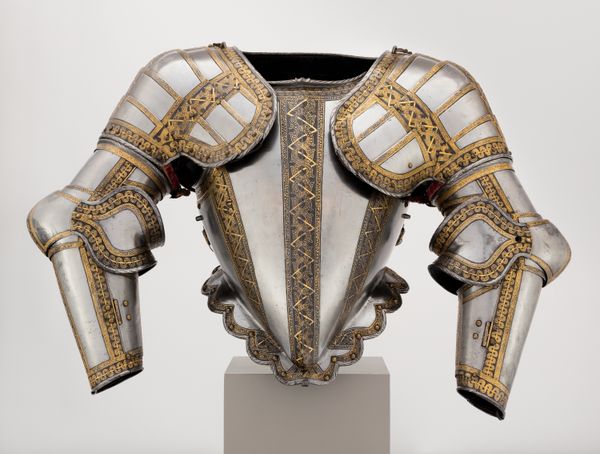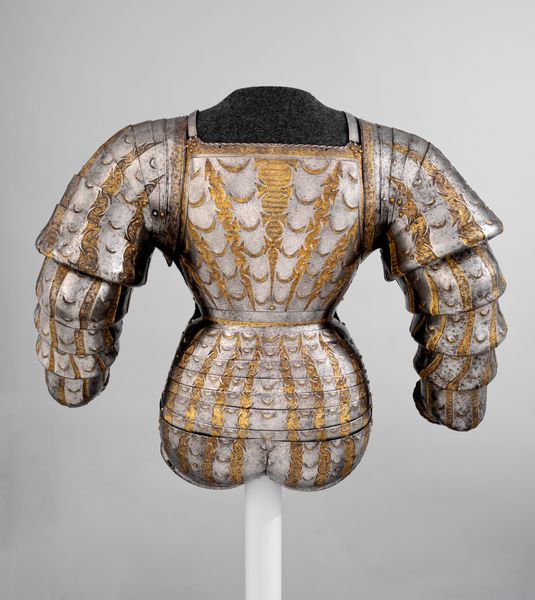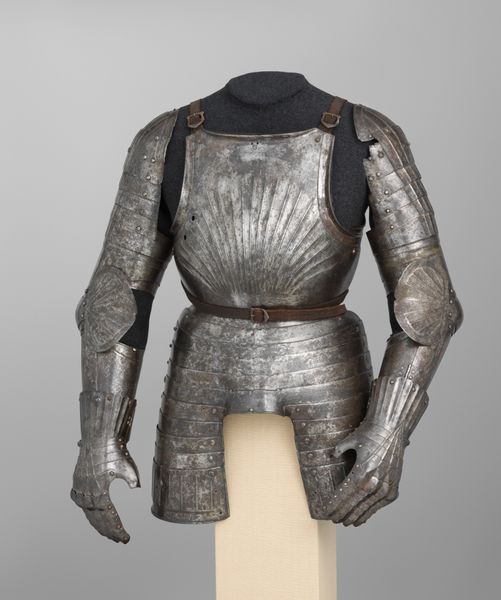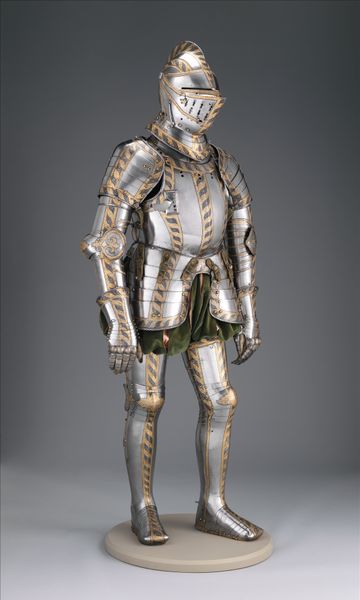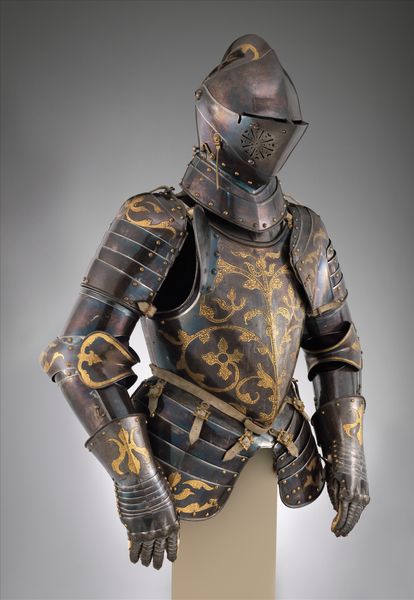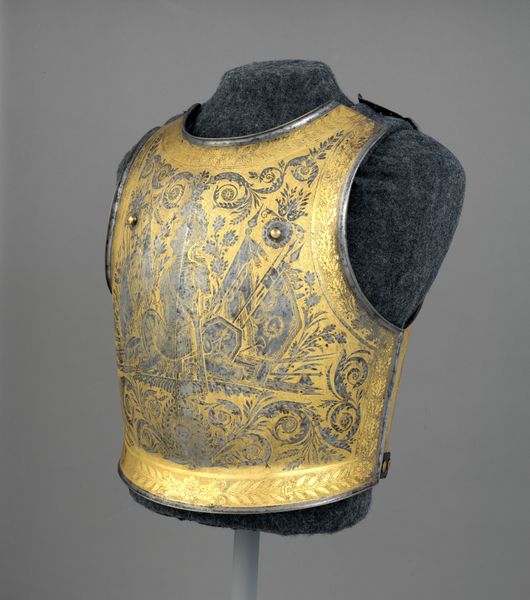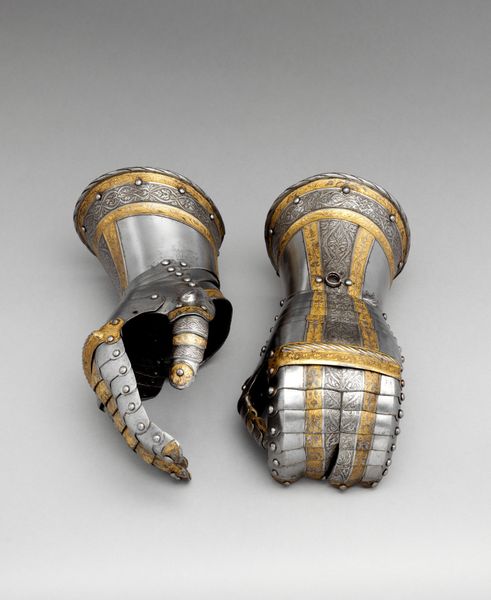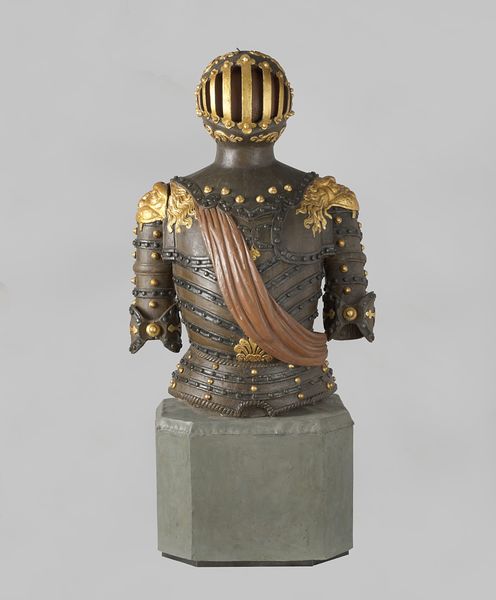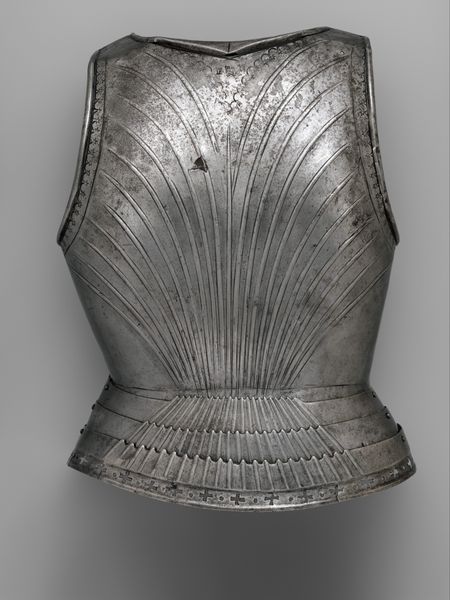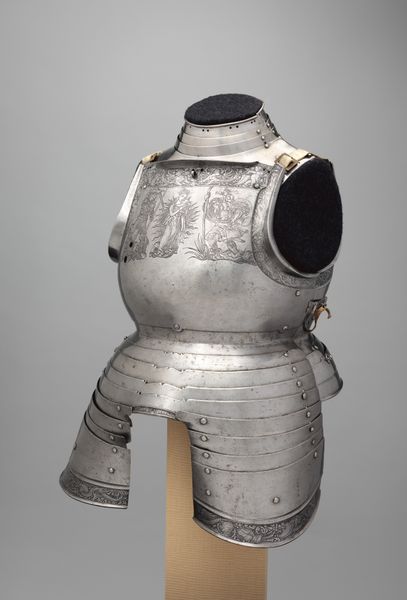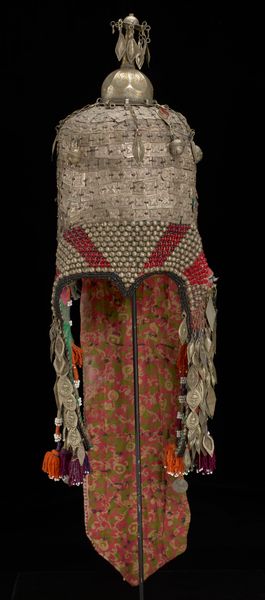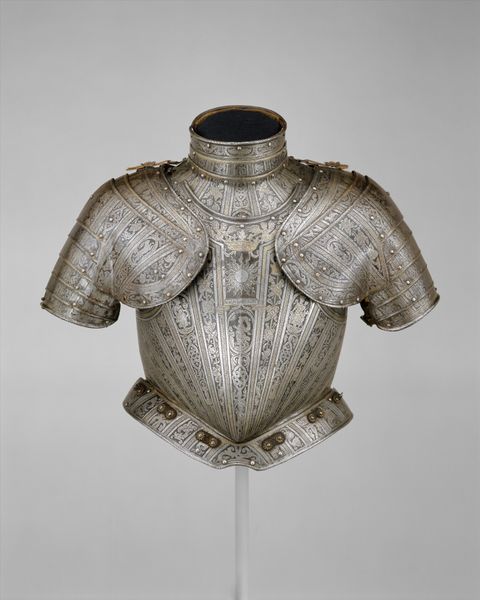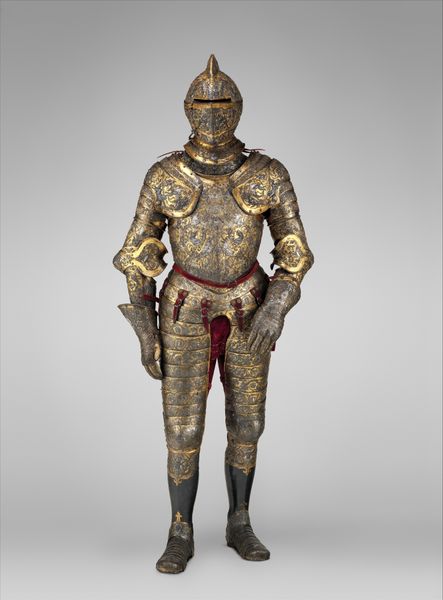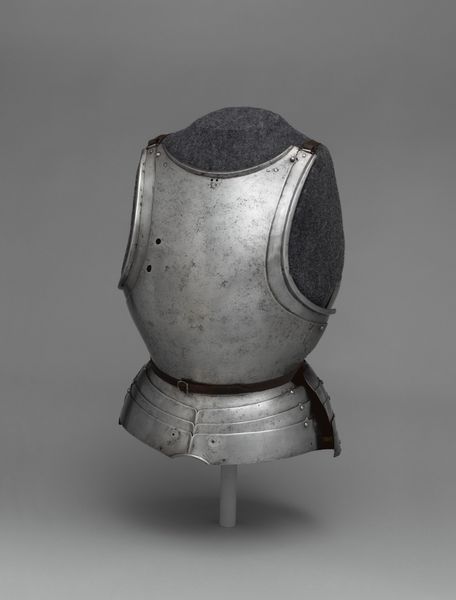
Backplate and Hoguine (Rump Defense) from a Costume Armor 1500 - 1550
0:00
0:00
metal, sculpture
#
medieval
#
metal
#
sculpture
#
dark design
#
textured
#
3d character model
#
11_renaissance
#
geometric
#
sculpture
#
armor
Dimensions: H. 27 in. (68.6 cm); W. 18 in. (45.7 cm); Wt. 9 lb. 11.88 oz. (4419 g); backplate: H. 16 1/4 in. (41.3 cm); W. 14 5/8 in. (37.1 cm); D. 7 15/16 in. (20.2 cm); D. with shoulder straps extended 11 5/8 in. (29.5 cm); Wt. 4 lb. (14.6 oz. (2229 g); rump defense: H. 13 1/8 in. (33.4 cm); W. 16 3/4 in. (42.6 cm); D. 8 1/8 in. (20.7 cm); Wt. 4 lb. 13.25 oz. (2190 g)
Copyright: Public Domain
This is the backplate and rump defense from a costume armor, made by Kolman Helmschmid sometime before 1532. Crafted from steel, this armor exemplifies the specialized labor of the metalworking guilds of the period. The process began with the careful selection and smelting of ore to produce high-quality steel. The plates were then shaped through hammering and forging, techniques requiring years of apprenticeship to master. Note the articulated lames, small overlapping plates, connected by rivets to provide flexibility. The armor is decorated with etching, a painstaking method of using acid to bite designs into the metal surface, creating intricate patterns. Gilding adds to its opulence. Such armor was a display of wealth and status, far removed from the functional needs of the battlefield. It represents not just the skill of the armorer, but also the social hierarchies and economic systems that supported such lavish commissions. By examining the materials and making of this armor, we recognize its cultural significance beyond mere protection.
Comments
No comments
Be the first to comment and join the conversation on the ultimate creative platform.
